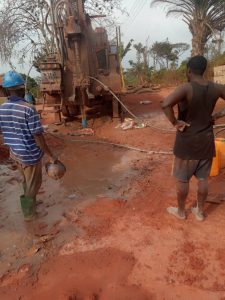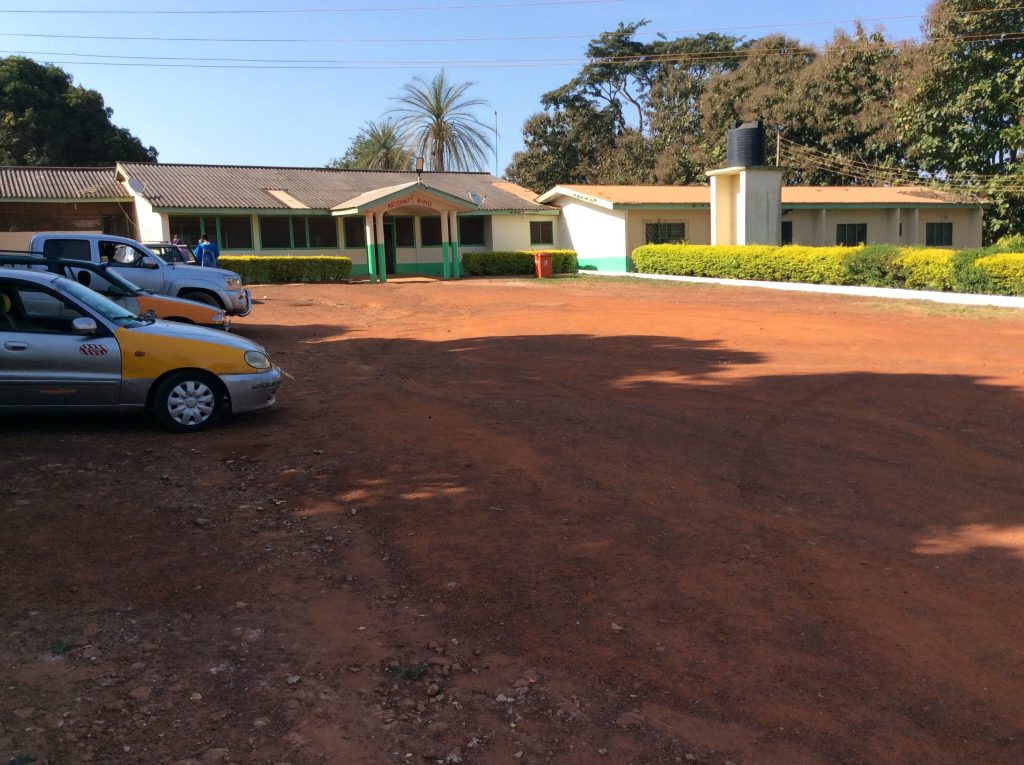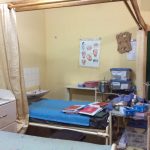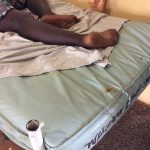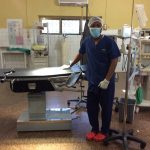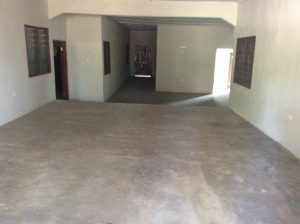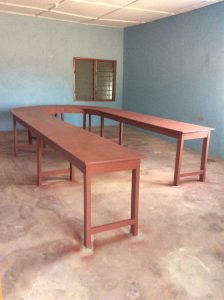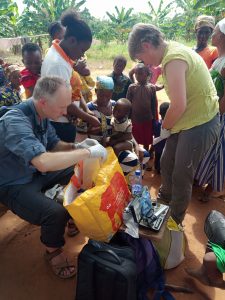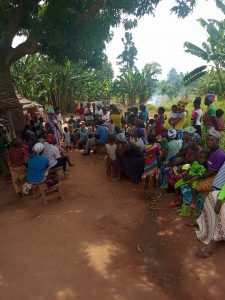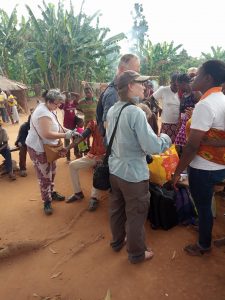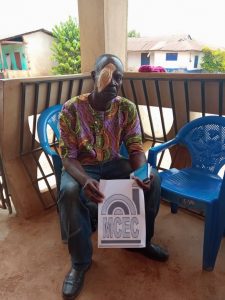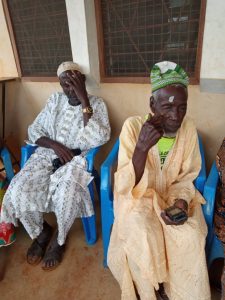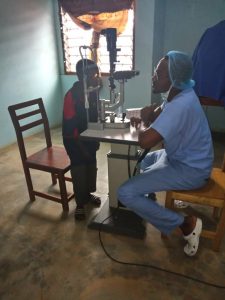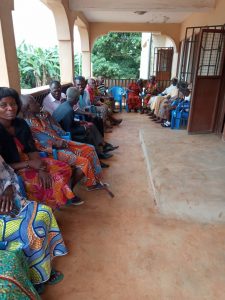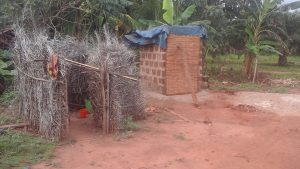Dave came across the little village of Asasebonsu recently. It’s in the middle of nowhere – you can only reach it by canoe. And it needs everything desperately, including the basics like clean water, latrines, hygiene training. The trouble is that it’s going to be mega-expensive to get all the materials safely across the stream. Here’s a video so you can see what we mean.
Category: News
Two new boreholes
Last week we drilled two new boreholes, which still have to be fitted with pumps. The first was for the village of Saviour Kwamang, sponsored by a Rotary Club. The people have to walk a long long way downhill to get to the nearest stream, and then come back carrying basins of water up a steep slope. It’s about the worst journey to collect water that we’ve ever seen. No wonder the villagers have terrible muscular-skeletal compression in later life.
And the second village is Onyameani, which we wrote about recently. The water here is stagnant, and home to various wild life – tortoises and frogs in particular – and the children spend their time going to and from hospital. But no more. The drill rig arrived as it was growing dark, and drilled till midnight before striking water. From sometime next week, when the pump will be installed, the villagers will have clean water at last.
How people pass their time
With the country in the grip of Brexit and everyone holding their breath, I wonder why the Home Office decides that now’s the right time to harrass long-standing, legitimate UK immigrants. We’re spending a lot of time helping frightened friends to appeal against deportation. Why now?
An amazing new year gift
Last week we wrote about our new project called ‘Develop A Ward’ in Mampong Maternity Hospital. Room by room, we intend to refurbish the hospital and provide it with modern equipment. And we will keep a close eye to see that our improvements are properly maintained.
Imagine our feelings when we were immediately promised two amazing sums of money to start the work – almost enough to cover the whole Mother and Baby Unit. We haven’t decided yet, but we’ll probably spend the it on some of the really important equipment the hospital lacks.
Thanks to our donors, halfway through 2019 will be a much better time to be born than 2018. We couldn’t be more grateful.
Develop a maternity ward
We’re starting a new project called ‘Develop A Ward’ in Mampong Maternity Hospital. The hospital has 55 beds catering annually for 2,000 deliveries and serves 102,300 people in Mampong District. It is also the principal referral point for maternity cases in its own and several neighbouring Districts.
We’ve chosen five rooms in different areas of the hospital to start with, and talked at length to the staff. They’ve told us how the absence of equipment damages their work. If, for example, if they had a scanner (price £405) they could measure the baby’s pulse and position and if necessary, rush the patient to theatre. A portable ultrasound machine that could move round the hospital would be only £4,035. Dozens of babies’ lives would be saved.
On this basis, we’ve put together and costed ‘shopping lists’ of everything needed in these five rooms. They range in price from £356 to refurbish a room in the antenatal ward to £12,439 to set up the mother and baby unit. We will use our own staff to oversee the work and they will account for every penny spent. And when we’ve finished the job, we will raise money to do the same for five more rooms.
Now we just need some donors to fund them. Please let us know if you have any ideas where we could find it.
Planning for the past
In Ashanti, social structures are tending to break down. For example, the old rites of puberty, engagement, marriage and many more are dying out, and alcoholism is spreading.
Martha Boadu, our founder, is concerned about this, and has built a museum to preserve the Ashanti heritage. There are already museums in Ghana, but most major on sepia photos of colonial rulers, with ceremonial thrones and drums. By contrast this museum will specialise in things collected by local people.
So far, the museum has a little house, built by traditional building methods (see bottom photo); lots of clay and wooden bowls; some old muskets; tribal robes and witchdoctor’s equipment; old Ghanaian currency and even European currency, which local people may never have seen. It’s planned to video ceremonies and children’s games and storytelling evenings, and display them too.
Maybe one day this will be a really key museum of Ashanti culture. And the building’s great too!
The Eye Of God
Onyameani means The Eye of God. It is the name of a very pretty village we visited last month. When we arrived, the community were waiting for us and were dancing to pass the time. They were very friendly and welcoming, though we smelt alcohol on some of the men.
The village stands on the site of a cocoa farm, destroyed by fire in 1983. The inhabitants are northeners, recruited long ago as labourers by the owner. There are about 400 of them. They are polygamous and there are many more children than adults.
We assumed that the village’s title referred to a small, round pool of stagnant water, full of frogs and turtles, from which the people drank. They told us that every week one or other family had to visit hospital, but they hadn’t made the link between the water and their health.
We’ve since found a sponsor to pay for a borehole, and the village has been visited by our doctors, shown in the photos. They’re going to need a lot of help to reach any sort of stability.
Second sight
Here’s a little interview with Mr Fuseini Amadu, Chief of Galiba Village, 75 years old, who has just had a second cataract operation, thanks to Hands International and the MCEC.
Nana Fuseini used to live in Yendi, Northern Ghana, where he farmed yam, cocoyam and maize. He is a member of the Dagomba tribe and his first language is Dabani rather than the Twi spoken by local people. He came south to Ashanti to find an easier life about fifteen years ago, when climate change made farming in Yendi very difficult.
He has two wives who bore him fifteen children, but five died. He is a Muslim.
In Galiba, he also farmed and his crops included maize, yam, groundnut and cow peas. As he got blinder he stopped working as he was afraid he’d hurt himself. Also, he stopped being able to distinguish between weeds and the crops he’d planted. He spent one year at home. Now he is back on the farm.
Ashanti Development operated on one eye some time ago. Now the other has also been operated on. He says both operations were successful, though the second eye looks as if it has hairs in it.
He prays for prosperity always to follow the donor. He prays God to bless everything he does. He says he is a human being so he can only say his thanks, but he knows that God will hear them.
Lending a helping hand
We’ve been given an amazing donation from the Health and Nutrition Development Society (HANDS), to be spent on cataract operations in the Ashanti.
Our home village, Gyetiase, has an eye clinic with an operating theatre, funded and equipped by SpecSavers. When we have identified enough patients who need cataract operations, we employ surgeons from Komfo Anokye Teaching Hospital to come and operate on them. We are eternally short of money to do this, and often turn away patients through lack of funds.
HANDS International, working with the Muslim Community & Education Centre, has given us funds for large numbers of operations, and we are eternally grateful to them and in particular the HANDS founder, Professor AG Billoo.
The same but different
We’re currently building latrines in two villages, Afromano and Bobin. Now that the rains are with us, work in Aframano has come to a halt. The roads are very bad, sometimes impassable, and it’s terribly difficult to work in these conditions. On top of that, Aframano is a long way from town and people have picked up very limited building skills, for example, they have to be taught to make mud bricks.
By contrast, in Bobin, all the mud bricks were made sometime ago and when the rains are light construction can continue. Bobin people are really keen to get latrines, as they’ve heard over and over from other villages that latrines and hygiene training mean that diarrhoea will disappear. So they’re determined to continue work whenever it’s humanly possible. Here are a few pictures of how they shelter their half-finished latrines from the weather.

